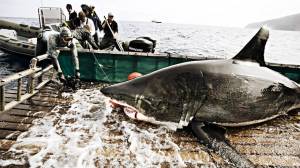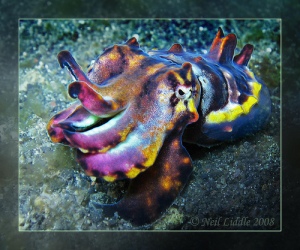 Human males in the pubs and clubs this Bank Holiday weekend participating in the UK’s human mating ritual have it easy compared to the male spiders of the species Nephilengys malabarensis, found in South-East Asia. Researchers have demonstrated that these males risk amputation and death in their attempts to woo their women.
Human males in the pubs and clubs this Bank Holiday weekend participating in the UK’s human mating ritual have it easy compared to the male spiders of the species Nephilengys malabarensis, found in South-East Asia. Researchers have demonstrated that these males risk amputation and death in their attempts to woo their women.
Kralj-Fiser et al ran experimental encounters between male and female N. malabarensis. As with many spider species, the female, at 20mm, is much larger than the male, who is a mere 4mm long by comparison. Males approached the female warily, waving their legs and shaking the web to test the female’s mood. If she was receptive, she orientated towards the male and he then approached and mated, inserting his palps into the female’s genital tract, transferring his sperm to the female.

Mating always resulted in amputation of the palp, either immediately (87.5% of palp insertions) or via self-amputation of disfigured palps by the male after mating, leaving the males as sterile eunuchs. Despite this sacrifice by the male, 75% of successful matings ended with the male being attacked and eaten by the female!
While it would seem logical that becoming a eunuch is not the best evolutionary strategy to take, counter-intuitively, becoming a eunuch is a successful mating strategy for these males. For a mating strategy to be successful, the male’s actions need to result in the best chances of offspring. Male N. Malabarensis spiders can only fill their palps with sperm once because spermiogenesis (the final stage of sperm manufacture) stops when males reach adulthood, so it is likely that one chance at mating with each palp is all they get, making amputation less of a loss than for species that can mate multiple times with multiple females. Additionally, the broken palp usually breaks off while still in the female, acting as a plug and blocking mating access for subsequent males, thus ensuring that any offspring are the eunuch male’s progeny. Furthermore, surviving male eunuch spiders were subsequently most aggressive in guarding their females against incursion by rival males, and usually won male-male contests, perhaps due to enhanced agility after the loss of the large palps. All these actions help to increase the male’s odds of paternity of the female’s future eggs, passing on his genes to the next generation. So, for this species at least, becoming a eunuch is a surprising but successful male mating strategy.
Reference
S Kralj-Fiser, M Gregoric, S Zhang, D Li and M Kuntner. 2011. Eunuchs are better fighters. Animal Behaviour 81: 933-939
Read Full Post »




